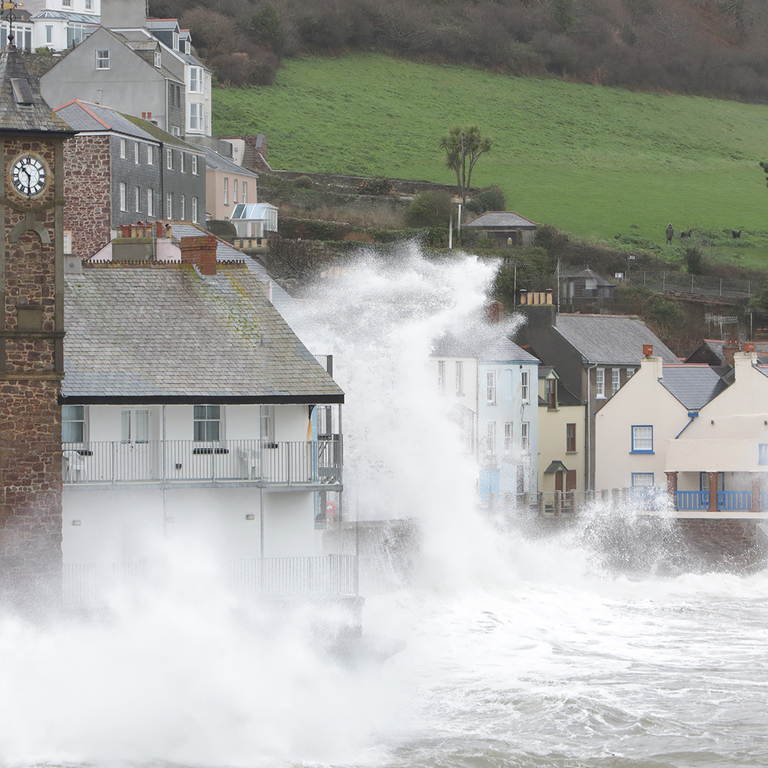Record-breaking high temperatures and extreme weather events are making headlines more frequently. Flooding, storms, and wildfires are on the rise. In fact, last year was the hottest on record.1
Heavy storms, flooding, extreme heat, and snow can all lead to significant business disruptions. These unexpected weather conditions are becoming more frequent and unpredictable.
The World Economic Forum’s Global Risk Report 2024 ranked extreme weather events second on the two-year horizon. It ranked them first on the 10-year horizon.2 This ranking highlights that severe weather preparation is a crucial aspect of running a business.
Taking proactive steps can help protect your small business, employees, and assets. These measures ensure business continuity during and after a weather event.
Conduct Risk Assessments
The first step in business continuity management is identifying your specific weather risks. Consider the following:
- Is your business located in a flood-prone area?
- Are you vulnerable to power outages during storms?
- Could extreme weather disrupt key business processes and critical business functions?
In 2024, about 6.3 million properties in England were at risk of flooding.3 This is roughly one in five properties. Conducting a risk assessment and business impact analysis is critical. These steps help identify necessary measures for:
- Flood risk management.
- Power backup.
- Structural reinforcement.
Develop a Robust Business Continuity Plan (BCP)
A well-structured business continuity plan outlines how your business functions and operations can continue during and after severe weather events. Your plan should include the following key components:
1. Emergency Response Procedures
Establish protocols for protecting staff members, evacuating if necessary, and securing the premises.
2. Communication Strategies
Develop clear methods for keeping employees, suppliers, and customers informed throughout any disruption.
3. Data Protection Measures
Install cloud storage and off-site backups to safeguard critical information. These measures ensure data backup and protection against data loss.
4. Alternative Working Arrangements
Create remote work plans to ensure business continuity in case access to the workplace is restricted.
Testing and updating your business continuity plans regularly ensures they remain effective. This process also helps align the plans with your business operations. This includes defining your organisation’s recovery time objective. It also involves establishing your recovery point objective. This ensures effective disaster recovery planning.
Arrange Adequate Business Insurance Cover
Business insurance plays an essential part in mitigating financial losses from extreme weather. Businesses should consider:
Storm Damage Insurance
This covers structural damage caused by strong winds, heavy rainfall, or falling debris.
Business Interruption Insurance
This helps cover lost income. It also addresses operating expenses if your business is forced to close due to an insured weather-related disruption.
Flood Risk Management Insurance
Essential for businesses in high-risk flood zones to cover damage to premises, equipment, and inventory.
Reviewing your policies with your insurer is vital. It ensures you have adequate cover for potential weather-related losses. Business leaders should also consider the implications of a cyber attack on their operations.
Strengthen your Business Premises against Extreme Weather
Proactive severe weather preparation can minimise damage to your small business property. Some floods are unavoidable. But proactive steps can help minimise damage to your business operations. This is especially important if natural disasters occur. Here’s how you can prepare:
1. Stay Informed
Register for flood alerts to ensure you receive timely warnings.4 You can sign up via;
- The Environment Agency.
- National Resources Wales.
- The Scottish Environment Protection Agency.
2. Assess your Risk
Conduct a thorough risk assessment of your premises. This will help you identify vulnerable areas and install appropriate protective measures.
3. Install Flood Protection
Fit non-return valves on drains and water pipes to prevent backflow during a flood.
4. Plan with Suppliers and Clients
Develop a flood contingency plan to ensure business continuity and minimise disruptions. Including a clear recovery strategy to address potential major disruptions.
Also consider:
- Reinforcing roofing and windows to withstand high winds.
- Trimming trees near your property to prevent storm-related damage.
- Securing loose outdoor equipment to avoid hazards during extreme weather.
Regular maintenance and inspections help identify vulnerabilities before they become costly issues.
Establish Emergency Procedures
Preparing employees for extreme weather ensures safety and reduces downtime in business functions. Your plan should include:
- Employee training on evacuation routes and emergency contacts. Including key personnel who will lead the response efforts.
- Staff checklists to include step-by-step procedures to follow, ensuring safety and efficient response.
- Emergency supply kits with essentials like flashlights, first aid, and battery packs.
- Clear guidelines on when to stay home or shift to remote work during hazardous conditions.
- Emergency contacts should include Floodline (0345 988 1188), key suppliers, and emergency services. Additionally, ensure you have evacuation contact details.
- Site map showing locations of essential supplies, protective materials, and shut-off points.
- Protection strategies include methods to safeguard employees and maintain health and safety. They also focus on minimising disruptions and supporting business recovery.
Conclusion
Extreme weather is an unavoidable challenge. However, companies that invest in an effective business continuity plan are better equipped. A good plan can help them handle potential threats and business disruption. A solid disaster recovery plan and interruption insurance ensure you can recover quickly and continue operating.
By taking these proactive steps, your business can stay resilient, no matter the weather.
Sources
1. britsafe.org/bracing-for-impact-businesses-urged-to-prepare-for-effects-of-climate-change
2. weforum.org/global-risk-report-2024-risks-are-growing-but-theres-hope
3. gov.uk/national-assessment-of-flood-and-coastal-erosion-risk-in-england-2024
4. check-for-flooding.service.gov.uk/alerts-and-warnings
Real-world insight that we don't share anywhere else
Get access to exclusive help, advice and support, delivered straight to your inbox.
You Could Save Over 30%*
Contact our team to receive a no obligation, instant quote today.
* Please click here to view our pricing disclaimer.


